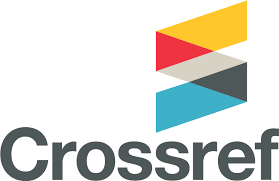The influence of marketing communication on perception and decision-making process of service users
DOI:
https://doi.org/10.5937/bizinfo2302057JKeywords:
marketing communication, service marketing, higher educationAbstract
The paper presents an analysis of the impact of marketing communication tools on the attitudes of service users, with a special emphasis on users of services provided by higher education institutions (HEIs). It first present the theoretical assumptions of the marketing concept and its application in HEIs, while the empirical part presents an analysis of the representation and adequacy of the various marketing communication instruments application at the Higher Business School of Vocational Studies in Leskovac. With different combinations of marketing communication instruments, comparative advantages in the education market can be achieved. The paper analyzes the results of the survey, which examines how and to what extent certain marketing communication instruments influence the attitudes of students of the HEI. The contribution of this research is reflected in the possibility of a better understanding the complexity of the issues related to the application of marketing communications in HE.
Downloads
References
Alalwan, A. A., Nriendra, R. P., Dwivedi, Y. K., & Algharabat, R. (2017). Social media in marketing: A review and analysis of the existing literature. Telematics and Informatics. 34 (7), 1177-1190. https://doi.org/10.1016/j.tele.2017.05.008
Akhmedov, B. (2022). A New Approach to Teaching Information Technologies in Education. Central Asian Journal of Education and Computer Sciences (CAJECS), 1(2), 73–78.
Alibabić, Š. (2002). Theory of organization of adult education. Belgrade: Institute for Pedagogy and Andragogy of the Faculty of Philosophy in Belgrade.
Altbach, P. G., Reisberg, L., Rumbley, L. E. (2009). Trends in global higher education: Tracking an academic revolution. A report prepared for the UNESCO 2009 world conference on higher education, Paris: UNESCO.
American Marketing Association. (2020, August 10). Dictionary. Retrieved from https://www.ama.org/the-definition-of-marketing-what-is-marketing/
Belch, G., Belch, M. (2011). Advertising and Promotion: An Integrated Marketing Communications Perspective. New York: McGraw-Hill.
Biswas, S. (2021). Exploring the Implications of Digital Marketing for Higher Education using Intuitionistic Fuzzy Group Decision Making Approach. BIMTECH Business Perspective, 2(1), 33-51. https://doi.org/10.1177/bsp.2021.2.1.33
Council of the European Union. (2014). Conclusions on efficient and innovative education and training to invest in skills — Supporting the 2014 European semester. Retrieved 21.08.2021. from https://www.consilium.europa.eu/uedocs/cms_data/docs/pressdata/en/educ/141138.pdf
Cubillo, J. M., Sánchez, J., & Cerviño, J. (2006). International students' decision‐making process. International Journal of Educational Management, 20(2), 101-115. https://doi.org/10.1108/09513540610646091
Dašić, M., Trajković, S., & Jakšić, K. (2022). Influence of service quality on customer satisfaction in Serbian logistics practice. Bizinfo (Blace), 13(1), 19-24. https://doi.org/10.5937/bizinfo2201019D
Dawar, N. (2004). What are Brands Good for?. MIT Sloan Management Review, 46(1), 31-37.
DeVellis, R. F. (2003). Scale development: Theory and application (2nd Ed.). Thousand Oaks, CA: Sage.
Filipović, V., Kostić Stanković, M., & Joksimović, I. (2010). Faktori maloprodaje u pozicioniranju brenda. Marketing, 41(4), 229-336.
Fill, C. (2009). Marketing communications: interactivity, communities, and content. Pearson Education Limited.
Gajić, J. (2011). Merenje satisfakcije studenata u visokom obrazovanju. Marketing, 42(1), 71–80. https://doi.org/10.5937/markt1101071G
Gligorijević, M., & Janičić, R. (2021). Strategijski marketing u oblasti visokog obrazovanja. Marketing, 52(3), 173-184. https://doi.org/10.5937/mkng2103173G
Goodwin, C.J. (2010). Research in psychology: Methods and design (6th Ed). New York: John Wiley & Sons.
Holbrook, M. B. (2018). A subjective personal introspective essay on the evolution of business schools, the fate of marketing education, and aspirations toward a great society. Australasian marketing journal, 26(2), 70-78. https://doi.org/10.1016/j.ausmj.2018.05.010
Ivy, J. (2008). A New Higher Education Marketing Mix: the 7Ps for MBA Marketing. International Journal of Educational Management, 22(4), 288–299. https://doi.org/10.1108/09513540810875635
Jurkowitsch, S., Vignali, C., & Kaufmann, H. R. (2006). A student satisfaction model for Austrian higher education providers considering aspects of marketing communications. Innovative Marketing, 2(3), 9-23.
Kostić-Stanković, M. (2011). Integrated business communications. Belgrade: Faculty of Organizational Sciences in Belgrade.
Kostić-Stanković, M., Filipović, V., & Štavljanin V. (2017). Marketing. Belgrade: Faculty of Organizational Sciences in Belgrade.
Kotler, F., & Keler, K. (2017). Marketing management (15th Ed). Belgrade: Data status.
Kotler, P., & Armstrong, G. (2011). Principles of Marketing (14th Ed). Boston: Pearson Education.
Lin, L. (1999). Linking Marketing and TQM in Higher Educational Institutions. The Hague: Dutch Quality Schools.
Mazzarol, T., & Soutar, G. N. (2002). ‘Push-pull’ factors influencing international student destination choice. International Journal of Educational Management, 16(2), 82–90. https://doi.org/10.1108/09513540210418403
Pallant, J. (2013). SPSS Survival Manual. A step by step guide to data analysis using SPSS. 4th edition. Allen & Unwin.
Peter, J, P., & Donnelly, J, H. (2001). Preface to Marketing Management (8th Ed). New York: The McGraw-Hill.
Pires, G. D., Stanton, J., & Rite, P. (2006). The internet, consumer empowerment and marketing strategies. European Journal of Marketing, 40(9/10), 936–949. https://doi.org/10.1108/03090560610680943
Popescu, I.C. (2002). Communication in Marketing-Tehnici, Concept Strategii. Bucuresti: Uranus (Chapter-1).
Ramadhan, A., & Gunarto, M. (2021, March). Analysis of digital marketing strategies in the era of the COVID-19 pandemic in private higher education. In 11th Annual International Conference on Industrial Engineering and Operations Management, IEOM (pp. 5674-5684).
Shimp, T. A (2010). Advertising, Promotion, and other aspects of Integrated Marketing Communications (8th Ed). Mason. Ohio: South-Western Cengage Learning.
Tabachnick, B. G., & Fidell, L. S. (2007). Using multivariate statistics (5th Ed). Boston: Pearson Education.
Turjačanin, V., & Čekrlija, Đ. (2006). Basic statistical methods and techniques in SPSS - Application of SPSS in social sciences. Banja Luka: Center for Cultural and Social Repair.
Varghese, N. V. (2008). Globalization of higher education and cross-border student mobility. UNESCO: International Institute for Educational Planning.
Wong, L., Tan, G. W., Hew. J., Ooi; K., & Leong, L. (2020). Mobile social media marketing: a new marketing channel among digital natives in higher education? Journal of Marketing for Higher Education, Taylor & Francis Journals, 32(1), 113-137. https://doi.org/10.1080/08841241.2020.1834486
Wright, R. E. (2000). Student evaluations and consumer orientation of universities. Journal of Nonprofit & Public Sector Marketing, 8(1), 33–40.
Yeshin, T. (2012). Integrated Marketing Communications. Oxford: Butterworth-Hinemann.
Downloads
Published
How to Cite
Issue
Section
License
Copyright (c) 2023 BizInfo (Blace) Journal of Economics, Management and Informatics

This work is licensed under a Creative Commons Attribution-NonCommercial 4.0 International License.












